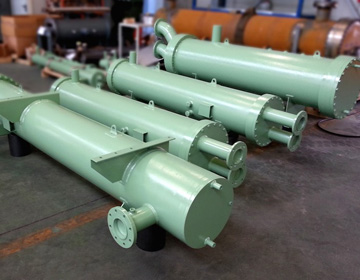What is a shell and tube heat exchanger?
Learn about shell and tube heat exchangers – a vital component in industrial heat transfer systems. Discover how these devices efficiently transfer heat between fluids, offering versatile applications in various industries.
A shell and tube heat exchanger could be a type of heat transfer gadget broadly utilized in different businesses to effectively exchange heat between two liquid streams. Its plan comprises of a shell (outer vessel) containing different tubes (inner vessels) through which the liquids flow. This arrangement facilitates the transfer of thermal energy from one fluid to another, without the fluids coming into coordinate contact.
The essential structure of a shell and tube heat exchanger comprises a cylindrical shell with a bundle of tubes passing through it. The shell regularly has gulf and outlet ports for the two liquid streams, while the tubes are fixed at both closes by tube sheets. This setup guarantees that the liquids stay isolated whereas allowing heat to transfer between them through the tube walls.
The operation of a shell and tube heat exchanger depends on the guideline of conduction, where heat is exchanged from a hotter liquid to a cooler liquid through the tube dividers. As the hot liquid flows through the tubes, it exchanges thermal energy to the tube dividers, heating them. Concurrently, the cooler liquid streams around the exterior of the tubes inside the shell, retaining heat from the tube dividers and hence cooling down.
The proficiency of heat transfer in a shell and tube heat exchanger depends on a few components, counting the flow rates of the liquids, their individual temperatures, the surface range of the tubes, and the plan of the exchanger. Turbulence-enhancing highlights such as confuses interior the shell can move forward heat transfer by advancing better blending of the liquids.
Shell and tube heat exchangers discover wide-ranging applications over businesses such as petrochemical, HVAC, power generation, and food preparing. They are utilized for different purposes, including heating, cooling, condensation, and evaporation processes. Their versatility, robust development, and capacity to handle high pressures and temperatures make them crucial components in numerous industrial processes, contributing to improved energy effectiveness, prepare optimization, and generally system reliability.

